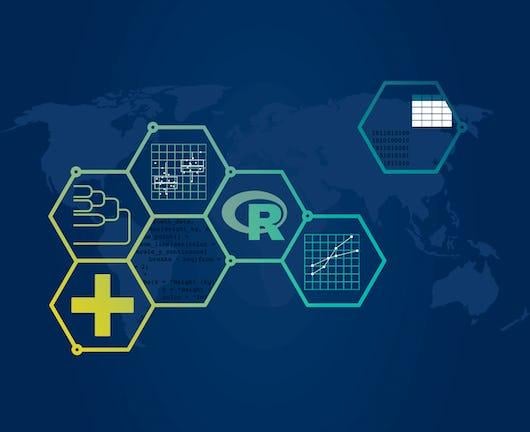MOOC List is learner-supported. When you buy through links on our site, we may earn an affiliate commission.

MOOC List is learner-supported. When you buy through links on our site, we may earn an affiliate commission.
Then, learners will visualize their data, creating publication-ready plots with relatively little effort. Finally, learners will understand how to set up a project workflow for their own analyses. All concepts taught in this course will be covered with multiple modalities: slide-based lectures, guided coding practice with the instructor, and independent but structured practice.
This course is part of the Data Science for Health Research Specialization.
What you'll learn
- Become knowledgeable about and conversant in the R environment
- Format and manipulate data within R into suitable formats
- Develop an intuition for doing exploratory data analysis
- Develop a workflow in R
Syllabus
Become knowledgeable about and conversant in the R environment
Module 1
Module 1 will cover all of the tasks to get you up and running in R. You’ll learn how to access R, how to navigate it, how to install R packages, and how to create scripts that keep a record of your work. We will also learn about The Global Findex Database 2017, a population-based survey and report that provides a wealth of information on financial access for persons all over the world. Your assessments will use data from The Global Findex Database 2017 to create a table and figure from the report.
Format and manipulate data within R into suitable formats
Module 2
In Module 2, you will develop insight into how functions work as you are introduced to various functions from the tidyverse, which is a collection of eight R packages useful in data science. The lessons will guide you through performing common data wrangling tasks, such as filtering observations of a dataset and joining data from different sources. By the end of the module, you will have used these tools to reproduce the Indicator Table from The Global Findex Database 2017, which estimates account ownership statistics, including gender and income gaps, for all of the surveyed countries.
Develop intuition for doing exploratory data analysis
Module 3
Module 3 introduces you to R graphical capabilities. You will both learn about different types of plots – including scatterplots, lineplots, barplots, boxplots, and histograms – and how to make them in R. You’ll learn how to create multipanel plots. And you’ll continue to learn good overall R “hygiene” by keeping your code tidy. You’ll put these newly learned skills to work re-creating Figure 1.1 from The Global Findex Database 2017, which shows how account ownership varies by the income level of a country.
Develop a workflow in R
Module 4
Having worked through the first three modules, you’ve (re)produced a table and figure from The Global Findex Database 2017. Now what? In Module 4, you will learn about sharing your work with others: exporting tables and figures from R onto your computer. You’ll be introduced to a means of writing reports in R using RMarkdown. And finally we’ll talk about what happens when you get stuck: how to ask questions and where to get help.
MOOC List is learner-supported. When you buy through links on our site, we may earn an affiliate commission.
MOOC List is learner-supported. When you buy through links on our site, we may earn an affiliate commission.
